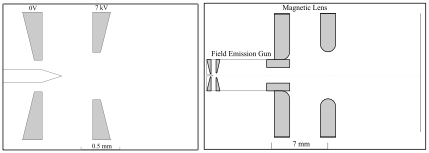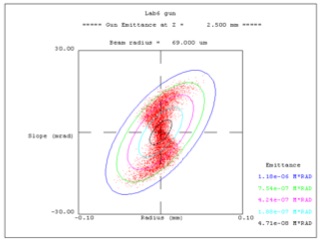SOURCE: Simulation and Design of Electron and Ion Sources

The basic method used in the software is the second-order finite element method (SOFEM). Curved electrodes are easily handled, and pointed cathodes with sub-micron radius spherical tips can be modeled accurately, even when the extraction electrode is several millimeters away from the tip.

The optical properties of the gun are output in tabular form, and facilities are provided for computing and plotting any specified equipotentials and electron trajectories, and for plotting graphs of the beam brightness as a function of the beam half-angle.
Software packages for post-processing the results in a graphical form and transferring the ray data into subsequent lenses of the column are available. After analyzing an electron or ion source with the standard SOURCE software, many (tens of thousands) of rays are computed in the source region with the initial rays conditions randomly generated, taking into account the current density distribution over the cathode surface and the Maxwell-Boltzmann initial velocity distribution. These rays are used to plot spot diagrams, current density and current histograms, current distributions through knife-edge, and emittance diagrams.


If you are interested in the SOURCE package, please contact us at info@electronoptica.com.

